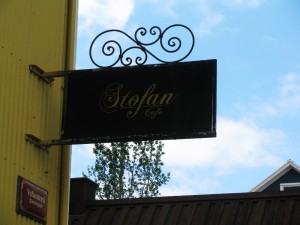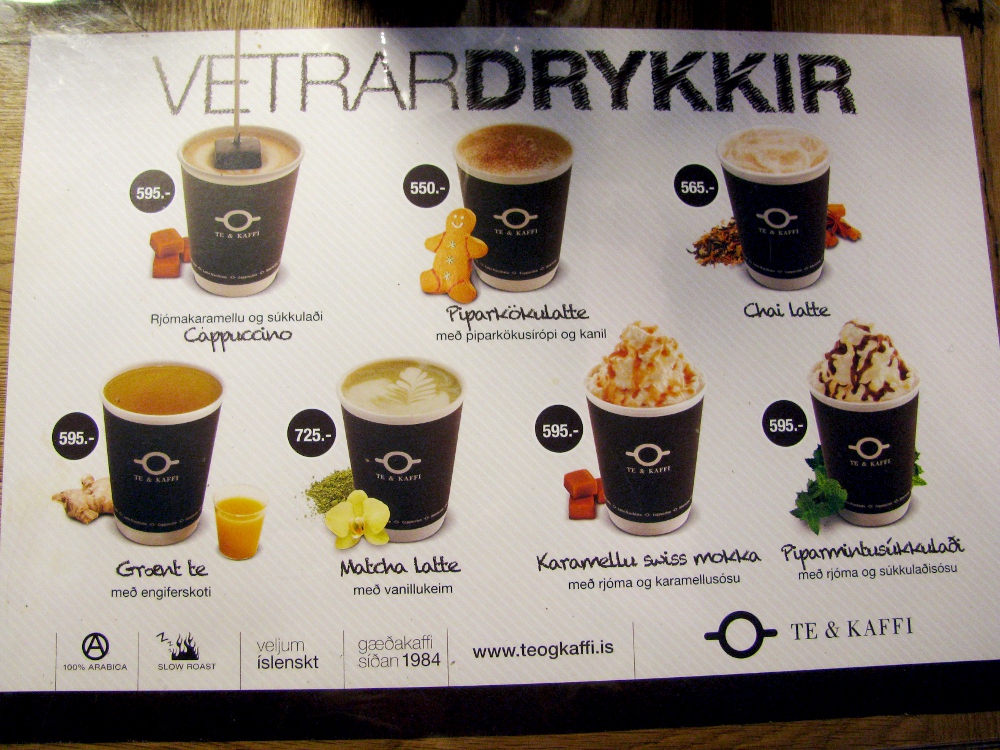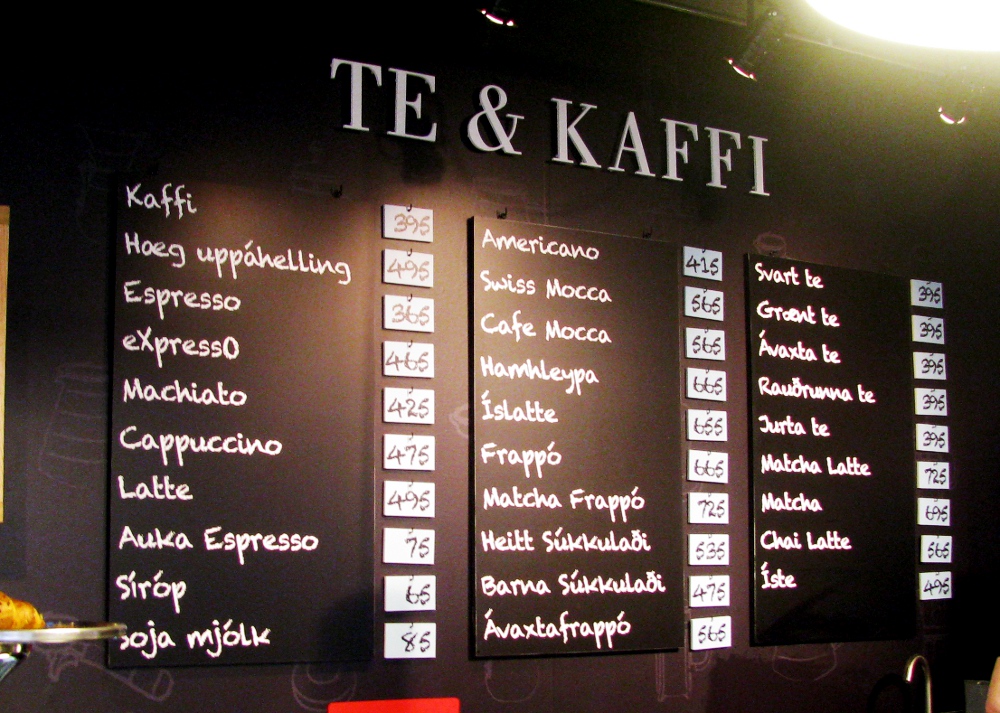How to order coffee in Icelandic Posted by hulda on Nov 24, 2012 in Icelandic culture, Icelandic customs, Icelandic history
 Icelanders are among the leading nations in the world when it comes to coffee consumption per capita. This means that no matter how small they are, every single town has at least three cafes, and that in Reykjavík there are so many of them that it’s hard to choose among them. Some serve a wide variety of coffee drinks, some serve their own recipes, some may only have classics but offer free refills – every cafe has their own little something that lures you in. Ordering coffee in Icelandic was among the first things I personally learned about the everyday language.
Icelanders are among the leading nations in the world when it comes to coffee consumption per capita. This means that no matter how small they are, every single town has at least three cafes, and that in Reykjavík there are so many of them that it’s hard to choose among them. Some serve a wide variety of coffee drinks, some serve their own recipes, some may only have classics but offer free refills – every cafe has their own little something that lures you in. Ordering coffee in Icelandic was among the first things I personally learned about the everyday language.
Drinking coffee is a vital skill over here. No matter where you go one of the first things people are going to ask you is whether you’d like some coffee. Icelandic coffee is typically strong and slightly bitter (although nowhere near the most bitter types of coffee). There’s a legend that claims that one cafe in the 60’s bought Swedish coffee long past its expiration date and served it to the locals who apparently found nothing to complain about the taste. Another legend, which is likely true, says that Icelandic politicians and priests have a long history of ulcers due to being served coffee wherever they went, and as there’s no polite way of saying no to coffee they ended up drinking huge amounts of it every day.
Menu at the cafe/restaurant Fru Berlaug. They serve free refills of coffee!
Icelanders’ attitude to weak coffee can be found in the many nicknames they have given it: meyjarhland (= maiden’s piss), nærbuxnavatn (= underwear water) and ærpissa í götu ( = ewe’s piss on a street) to name some examples. Strong coffee doesn’t go all without criticism either – it can be called eitur (= poison), rotsopa (= knock-out sip), blek (= ink) or vatnssóttarkaffi (= water contaminated by coffee? – this one’s difficult to translate: vatn = water, sótt = disease, kaffi = coffee). Still, strong is always preferable to weak and these terms are often used as endearments.
Christmas is coming and so are the Christmas specialties in Te & Kaffi.
Coffee’s so important you can even find it in Icelandic sayings. “Bara tíu dropar” (= just ten drops) means “I’ll say I only want a little bit more but actually I want a lot”, or “I’m asking for just a little bit more but I won’t mind a whole cup either”. Another saying goes “það sér í botn á sextugu”. This one comes from the sailors and means that you see the bottom of the coffee pan 60 fathoms deep. In other words the coffee is seriously weak.
The menu of Te & Kaffi. Under normal coffee is hæg uppáhelling (= slow making), auka espresso (= extra espresso), síróp (= syrup), soja mjólk (= soy milk). Swiss mocca/mocha (both spellings seem to exist) is coffee with chocolate topped with whipped cream. Hamhleypa I have no idea of – dictionary claims it to mean a powerhouse or a hustler but somehow I don’t think that’s what they’re selling. XD Íslatte (= ice latte), frappó (= frappucino), heitt súkkulaði (= hot chocolate), barna súkkulaði (= children’s chocolate), ávaxtafrappó (= fruit frappucino), svart te (= black tea), grænt te (= green tea), ávaxta te (= fruit tea) rauðrunna te (= rooibos tea), jurta te (= herb tea).
Here’s a little pronunciation guide I made for ordering coffee in Icelandic. May you never lack your beverage of choice in Iceland!
Note: “Ég ætla að fá” translates literally as “I’m going to get” but it’s considered a perfectly polite way of ordering food and drinks. I’ve translated it here as “I’d like to have” because going by the general meaning that’s its closest equivalent.

Build vocabulary, practice pronunciation, and more with Transparent Language Online. Available anytime, anywhere, on any device.
About the Author: hulda
Hi, I'm Hulda, originally Finnish but now living in the suburbs of Reykjavík. I'm here to help you in any way I can if you're considering learning Icelandic. Nice to meet you!







Comments:
Anna:
Sorry I was wondering if the person who made this video was really Icelandic… It may be just me but it sounds a bit different to what I’m used to. I thought that Vatn was pronounced ‘VaHn’ and ‘aetla’ aHtla…
hulda:
@Anna Owtch! XD You’re right, I still pronounce somewhat faulty. “Ætla” is indeed pronounced with that little “h”-sound (but “æ” is pronounced more like “eye”, not “a”). “Vatn” likewise has the little “h”, and in “vatnsglass” the pronunciation is indeed closer to “vahssglass”.
No, I’m not Icelandic – like it says there in my info I’m a third year student, studying the language at the University of Iceland. I shall learn from this and better my pronunciation!
Mark Maghie:
My instructor prefers me to say, “gæti ég fengið…”
hulda:
@Mark Maghie Absolutely correct! It’s a touch more formal. 🙂